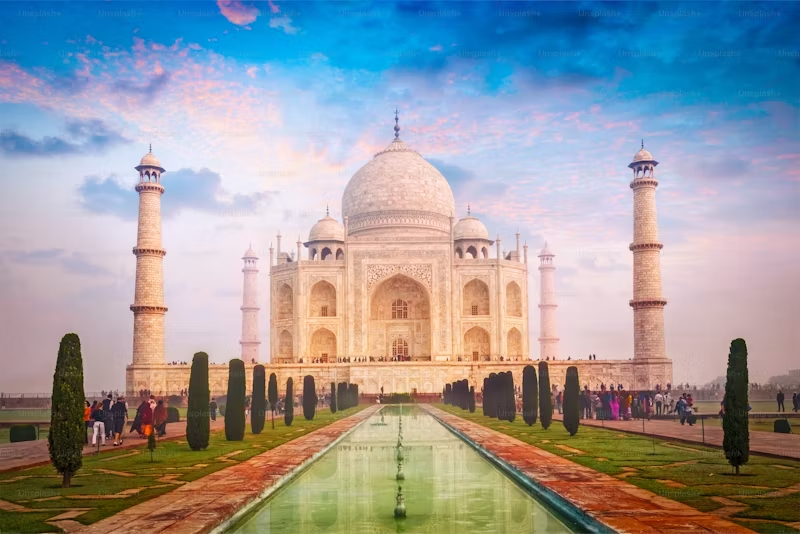Cultural Sites to Visit in India, a land steeped in history and culture, offers a myriad of cultural landmarks that showcase its vibrant past. From the majestic Taj Mahal to the ancient Ajanta Caves, the country boasts UNESCO World Heritage Sites and iconic monuments that reflect its diverse heritage. Explore the intricate carvings of the Khajuraho Temples, marvel at the architectural grandeur of the Red Fort, or delve into the spiritual significance of the Mahabodhi Temple. Immerse yourself in India’s rich tapestry of history and culture, and discover the captivating stories behind its most cherished landmarks.
- 1. Taj Mahal – Agra, Uttar Pradesh
- 2. Varanasi Ghats – Varanasi, Uttar Pradesh
- 3. Khajuraho Temples – Madhya Pradesh
- 4. Jaipur City Palace – Jaipur, Rajasthan
- 5. Ajanta and Ellora Caves – Maharashtra
- 6. Hampi – Karnataka
- 7. Mysore Palace – Mysore, Karnataka
- 8. Sun Temple – Konark, Odisha
- 9. Rani ki Vav – Patan, Gujarat
- 10. Sanchi Stupa – Sanchi, Madhya Pradesh
- Conclusion
- FAQs
1. Taj Mahal – Agra, Uttar Pradesh
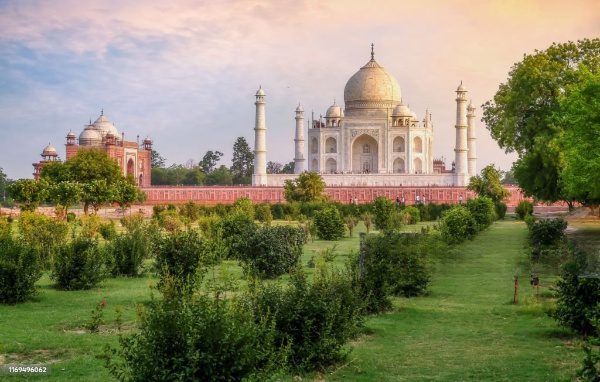
The Taj Mahal, a symbol of eternal love, was built by Emperor Shah Jahan in memory of his beloved wife, Mumtaz Mahal. This stunning white marble mausoleum is recognized as one of the Seven Wonders of the World and a masterpiece of Mughal architecture.
Key Attractions:
- Intricate Inlay Work: Admire the delicate floral and geometric patterns carved into the white marble.
- Breathtaking Views: Visit at sunrise or sunset for stunning photo opportunities and a more peaceful experience.
- Mughal Gardens: Explore the symmetrical gardens that surround the Taj Mahal, showcasing the beauty of Mughal landscape design.
Planning Your Visit:
- Avoid Crowds: Arrive early in the morning to avoid long lines and crowds.
- Travel Options: Agra is easily accessible by road, train, or plane. Consider taking the Yamuna Expressway from Delhi for a faster journey.
2. Varanasi Ghats – Varanasi, Uttar Pradesh
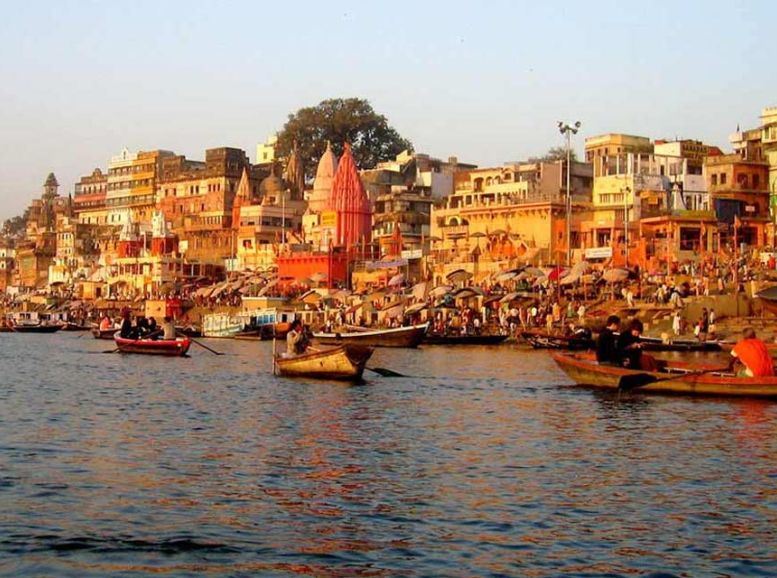
Varanasi, one of the world’s oldest cities, is the spiritual heart of India. The ghats along the River Ganges, where Hindu rituals are performed, offer a captivating blend of devotion and history.
Must-See Experiences:
- Ganga Aarti: Witness the mesmerizing Ganga Aarti ceremony at Dashashwamedh Ghat, a colorful evening ritual involving prayers, music, and light.
- Dawn Boat Ride: Take a peaceful boat ride at dawn to experience the serene beauty of the ghats and the early morning prayers.
- Exploring the Lanes: Wander through the narrow, winding streets of Varanasi, filled with ancient temples, local eateries, and bustling markets.
Planning Your Trip:
- Best Time to Visit: October to March is the ideal time to visit Varanasi, with pleasant temperatures and fewer crowds.
- Respectful Behavior: Respect local customs and dress modestly, especially when visiting religious sites.
3. Khajuraho Temples – Madhya Pradesh
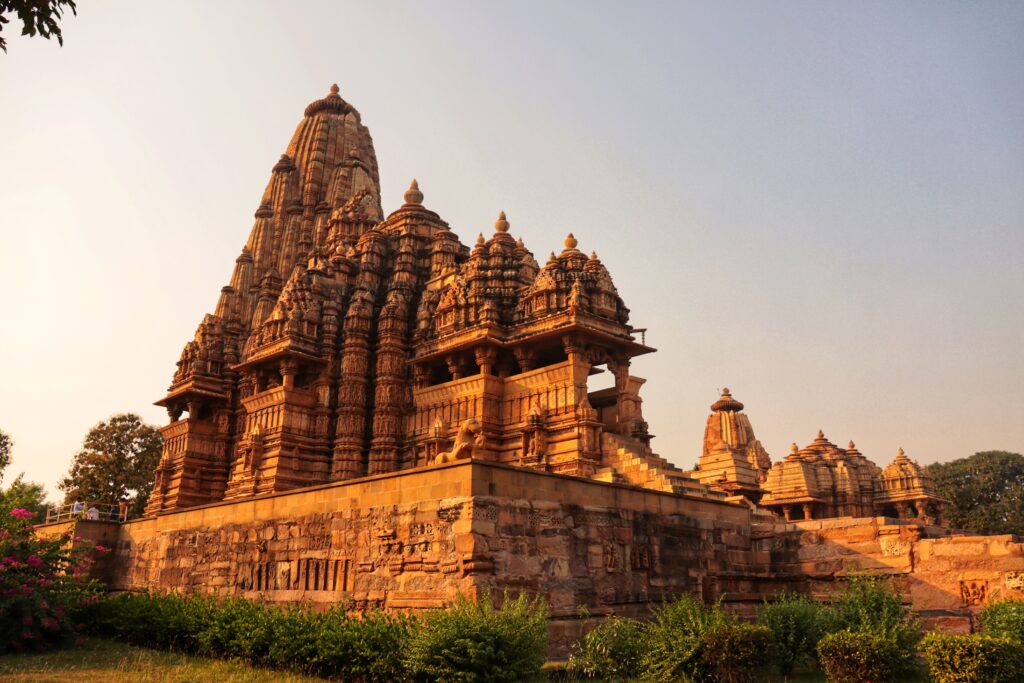
Khajuraho, a UNESCO World Heritage site, is renowned for its stunning group of Hindu and Jain temples. These temples, dating back to the 10th century, are adorned with intricate erotic sculptures that showcase the artistic excellence of the time.
Key Attractions:
- Western Group of Temples: Explore the Western Group of Temples, which includes the magnificent Kandariya Mahadev Temple, one of the most impressive structures in Khajuraho.
- Erotic Sculptures: Marvel at the detailed and expressive sculptures that adorn the temples, depicting various aspects of life, love, and spirituality.
Planning Your Visit:
- Khajuraho Dance Festival: Visit in February to enjoy the Khajuraho Dance Festival, a vibrant event featuring classical dance performances.
- Photography: Photography is allowed in Khajuraho, so bring your camera to capture the architectural beauty and intricate carvings.
4. Jaipur City Palace – Jaipur, Rajasthan
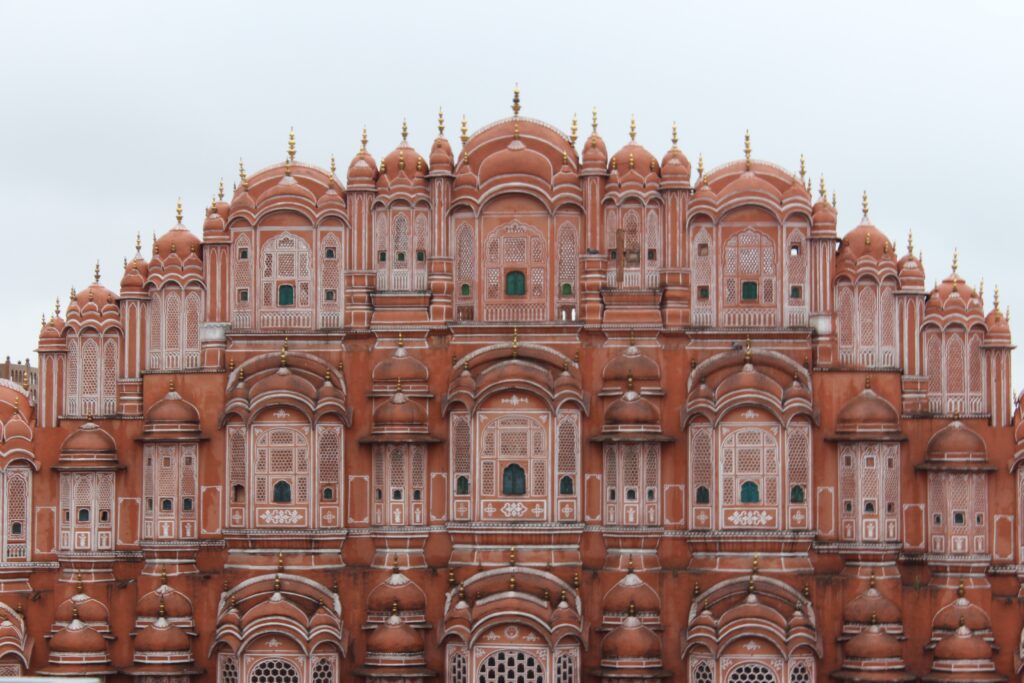
Jaipur, also known as the Pink City, is a bustling metropolis that showcases the grandeur of Rajasthani architecture. The City Palace, a magnificent complex of courtyards, gardens, and museums, is a must-visit attraction.
Key Attractions:
- Chandra Mahal and Mubarak Mahal: Explore the opulent interiors of these palaces, adorned with intricate carvings and colorful murals.
- Museums: Visit the museums within the City Palace to discover royal costumes, armory, and jewelry.
- Panoramic Views: Enjoy breathtaking views of Jaipur from the rooftop of the City Palace.
Planning Your Visit:
- Golden Triangle: Jaipur is part of the Golden Triangle, a popular tourist circuit that also includes Agra and Delhi. Consider combining these cities for a comprehensive tour of Rajasthan.
- Early Morning Visits: Aim for early morning visits to avoid crowds and the scorching heat of Jaipur.
5. Ajanta and Ellora Caves – Maharashtra
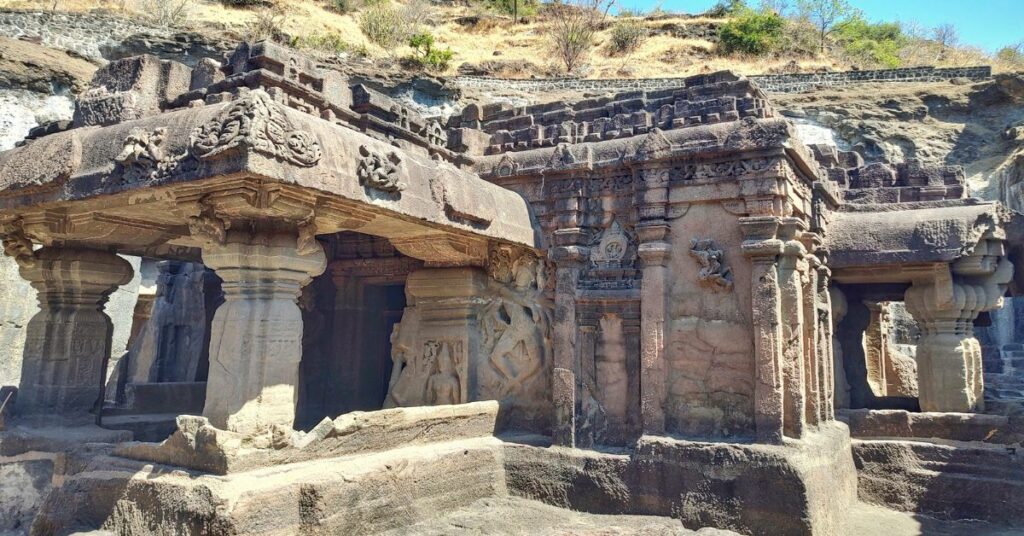
Ajanta and Ellora Caves, two UNESCO World Heritage sites, offer a glimpse into India’s rich cultural heritage. These rock-cut caves, dating back to the 2nd century BCE, showcase intricate Buddhist, Hindu, and Jain art.
Key Attractions:
- Ajanta Caves: Marvel at the stunning Buddhist frescoes, depicting scenes from the life of Buddha and various Buddhist deities.
- Ellora Caves: Discover the Kailasa Temple, a monolithic masterpiece carved from a single rock, representing the Hindu deity Shiva.
- Diverse Art: Explore over 30 caves, each with unique carvings and sculptures that tell stories from different religions.
Planning Your Visit:
- Avoid Monsoon Season: Avoid visiting during the monsoon season (June to September) as some areas can become slippery and inaccessible.
- Guided Tour: Consider hiring a guide to gain a deeper understanding of the caves’ historical and cultural significance.
6. Hampi – Karnataka
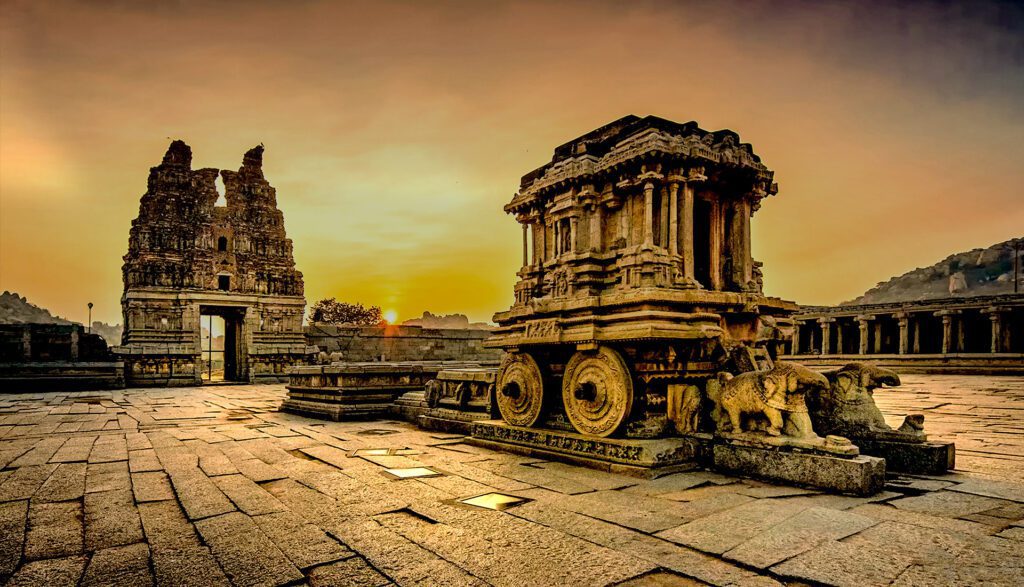
Hampi, a UNESCO World Heritage site, was once the capital of the Vijayanagara Empire. This ancient city is renowned for its stunning temples, monuments, and rugged landscapes.
Key Attractions:
- Virupaksha Temple: Visit the iconic Virupaksha Temple, one of the most important Hindu temples in Karnataka.
- Vittala Temple Complex: Explore the grand Vittala Temple complex, featuring the famous stone chariot and musical pillars.
- Coracle Ride: Enjoy a scenic coracle ride on the Tungabhadra River, offering breathtaking views of the ruins.
Planning Your Visit:
- Best Time to Visit: The ideal time to visit Hampi is between October and February, when the weather is pleasant.
- Comfortable Footwear: Wear comfortable footwear as there’s a lot of walking involved in exploring the ruins.
7. Mysore Palace – Mysore, Karnataka
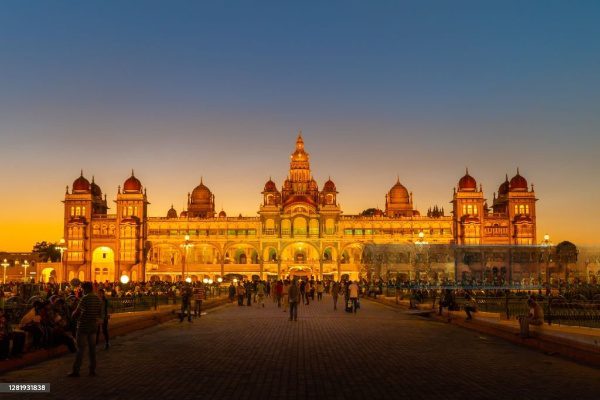
Mysore Palace, one of India’s most popular tourist attractions, is a magnificent example of Indo-Saracenic architecture, combining elements of Hindu, Muslim, Rajput, and Gothic styles.
Key Attractions:
- Dasara Festival: Witness the stunning illumination of the palace during the Dasara Festival, a grand celebration filled with colorful processions and cultural events.
- Royal Treasures: Explore the palace’s many rooms to discover exquisite royal jewelry, intricate woodwork, and antique paintings.
Planning Your Visit:
- Dasara Festival: If you want to experience the palace at its best, plan your visit during the Dasara Festival.
- Photography Restrictions: Be aware that photography inside the palace is restricted in certain areas. Check the rules beforehand.
8. Sun Temple – Konark, Odisha

The Sun Temple in Konark, a UNESCO World Heritage site, is a magnificent temple dedicated to the Sun God. Its unique chariot-shaped structure, pulled by seven horses, is a marvel of architectural brilliance.
Key Attractions:
- Intricate Carvings: Admire the intricate carvings and sculptures that adorn the temple, depicting various aspects of life, mythology, and astronomy.
- Konark Dance Festival: Don’t miss the annual Konark Dance Festival, held in the temple’s amphitheater, featuring classical Indian dance performances.
Planning Your Visit:
- Best Time to Visit: The ideal time to visit Konark is during the winter months (November to February), when the weather is pleasant.
- Dance Festival: If you’re interested in witnessing the Konark Dance Festival, plan your trip accordingly.
9. Rani ki Vav – Patan, Gujarat

Rani Ki Vav, a UNESCO World Heritage site located in Gujarat, India, is a stunning 11th-century stepwell that showcases the architectural brilliance of ancient India. This intricate structure features seven levels, each adorned with beautifully carved pillars, statues of gods and goddesses, and intricate motifs.
Key Attractions:
- Intricate Carvings: Admire the exquisite carvings that adorn the walls and pillars of the stepwell, depicting scenes from Hindu mythology and daily life.
- Architectural Marvel: Explore the complex structure of the stepwell, which exemplifies ancient Indian engineering and water management techniques.
Planning Your Visit:
- Best Time to Visit: The ideal time to visit Rani Ki Vav is between October and March, when the weather is pleasant and comfortable.
- Comfortable Footwear: Wear comfortable footwear as there are many steps to explore within the stepwell.
10. Sanchi Stupa – Sanchi, Madhya Pradesh
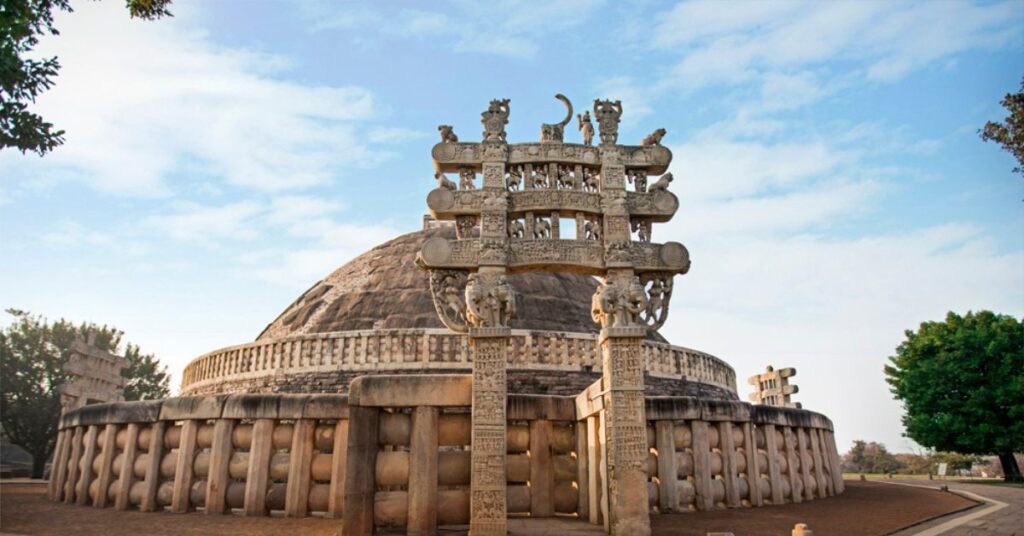
Sanchi Stupa, a UNESCO World Heritage site, is one of India’s oldest stone structures and a significant Buddhist monument. This iconic stupa, with its towering dome and intricately carved gateways, is a testament to the rich Buddhist heritage of India.
Key Attractions:
- Great Stupa: Marvel at the majestic Great Stupa, adorned with carvings depicting scenes from Buddha‘s life and teachings.
- Surrounding Stupas and Monasteries: Explore the smaller stupas and monasteries that surround the Great Stupa, offering insights into the Buddhist monastic life.
Planning Your Visit:
- Best Time to Visit: The ideal time to visit Sanchi is during the winter months (October to March) when the weather is pleasant.
- Guided Tour: Consider hiring a guide to gain a deeper understanding of the symbolism and stories behind the intricate carvings on the stupa.
Additional Tips for Travelers – Cultural Sites to Visit in India
- Respect local customs and dress appropriately.
- Check the local customs and timings for each site.
- Consider hiring guides for an enriched experience.
Conclusion
India’s cultural heritage is a captivating journey through time, where each site unfolds its own unique story. From the awe-inspiring Taj Mahal, a monument to eternal love, to the vibrant ghats of Varanasi, where ancient rituals unfold alongside the Ganges River, every destination offers a glimpse into India’s soul. Explore architectural marvels like the intricate carvings of the Sun Temple in Konark or the majestic stepwell of Rani Ki Vav. Delve into the rich tapestry of religions at the Buddhist pilgrimage site of Sanchi Stupa or the Khajuraho Caves, renowned for their exquisite sculptures. Whether you’re fascinated by ancient history, the incredible diversity of faiths, or breathtaking architectural achievements, India’s cultural sites hold the key to unlocking the rich traditions and vibrant history of this incredible country. Plan your exploration at Xplro.com, your gateway to crafting the perfect itinerary for an unforgettable journey through India’s cultural heritage.
FAQs
1. When is the ideal time to visit cultural landmarks in India?
- The optimal time to visit most of India’s cultural sites is between October and March, during the cooler winter season. This period offers milder temperatures, making it more comfortable for sightseeing, especially at outdoor monuments and historic sites.
2. Do I need any special permits for visiting historical or cultural sites?
- Most cultural attractions don’t require special permits, though a few restricted areas, like parts of India’s Northeast, may need travel permits for international visitors. Typically, you’ll just need an entry ticket, which you can often buy online or at the site itself.
3. Are there dress codes for religious and cultural sites?
- Yes, modest dress is encouraged. Visitors are generally expected to wear clothing that covers shoulders and legs, especially at temples or shrines. Some religious sites may also ask you to cover your head or remove shoes before entering.
4. Are there guides available, and are they worth hiring?
- Guides are available at most major sites, and they can enhance your visit by providing historical background and stories that bring the site to life. Look for licensed guides to ensure accuracy and a high-quality experience. You can usually hire guides at the site or book through travel agencies.
5. How much time should I plan for each cultural site?
- Time requirements vary. Larger locations like the Taj Mahal or Ajanta and Ellora Caves might take a full day, while smaller sites, such as Rani ki Vav or Sanchi Stupa, can generally be seen in a few hours. It’s helpful to check each site’s website for suggested times.
6. Is photography allowed at these cultural locations?
- Photography is permitted at most cultural landmarks, but some areas, especially inside temples or museums, may restrict it. Drones often require special permissions, so always check for signage or inquire about photography rules when you arrive.
7. What is the usual entry fee for tourists at India’s main cultural sites?
- Entry fees can differ significantly between sites, with foreign visitors often paying higher fees. For example, the Taj Mahal charges around ₹1,300 (approximately $15 USD) for international tourists, while local entry fees are typically lower. To avoid surprises, verify fees on the official website of each attraction.
8. Will I find food and water available at these sites?
- Yes, food and drink options are usually accessible near popular landmarks, although choices may be limited at remote sites. Bringing a reusable water bottle and light snacks can be helpful, especially at isolated locations like Hampi.
9. What languages do guides and locals typically speak at cultural sites?
- Guides commonly speak English and Hindi, especially at well-visited sites. In major cities, you’ll find that many locals also understand basic English. If you’re visiting remote areas, hiring a translator or learning a few local phrases can enhance your experience.
10. Is solo travel safe at India’s cultural sites?
- Generally, India’s cultural sites are safe for solo visitors, particularly during daylight hours. Practicing basic safety measures, such as keeping an eye on personal belongings and avoiding secluded areas after dark, can help ensure a safe experience. For added security, solo travelers may find it beneficial to join a group or use local guides.
11. Will festivals affect access to these cultural sites?
- Some locations might have larger crowds or restricted access during festivals, though visiting at these times offers a unique experience as sites are often decorated and bustling with cultural activities. If you want a quieter experience, try visiting a few days before or after the main event.
12. How can I show respect for local customs at these cultural sites?
- Respecting local customs includes dressing appropriately, maintaining a quiet demeanor, and removing shoes in religious areas. Avoid handling religious objects, ask for permission before photographing people, and stay respectful in sacred spaces.




